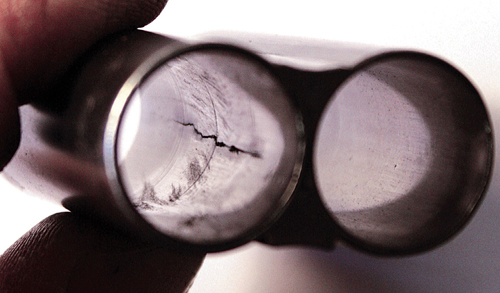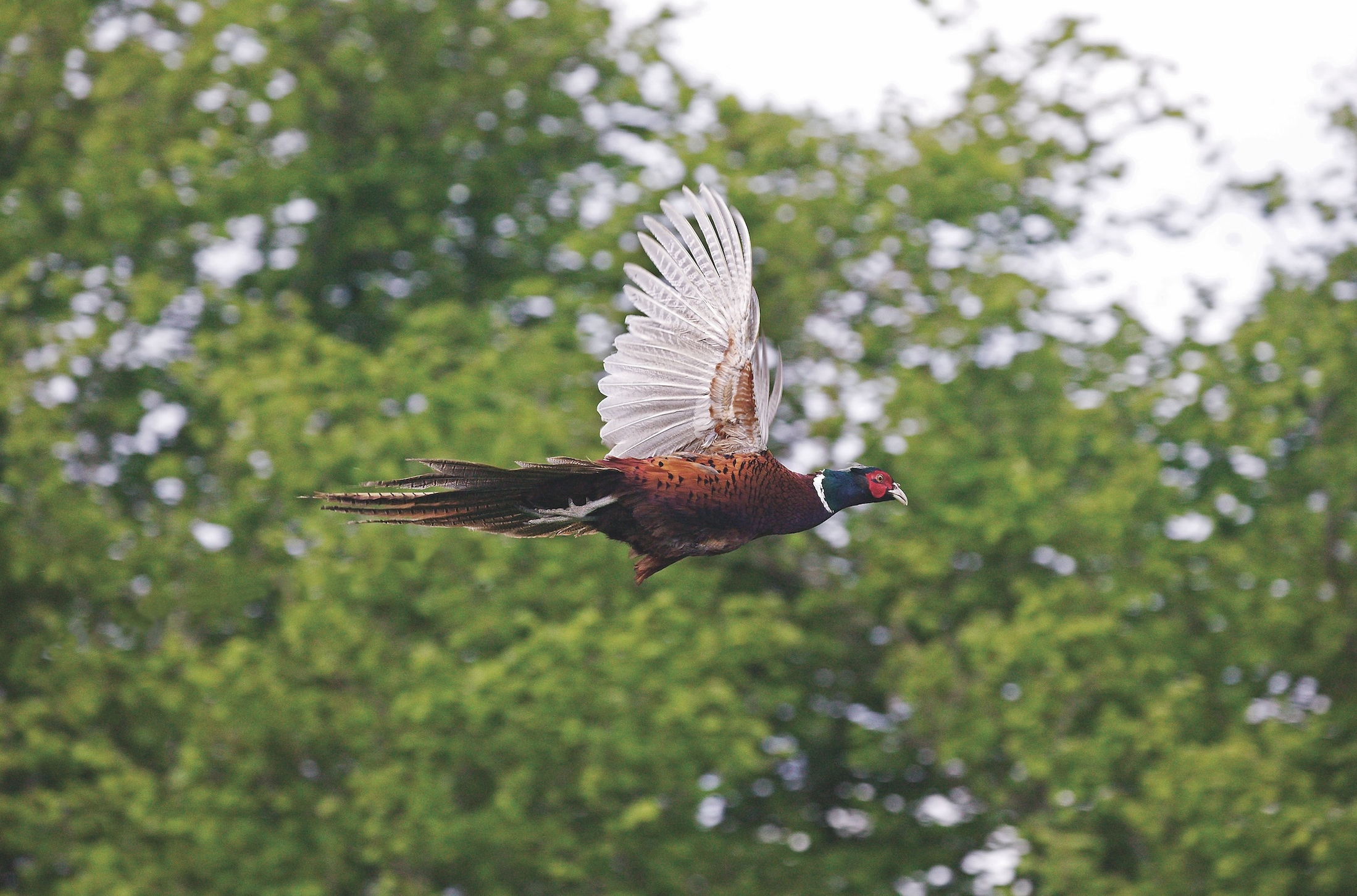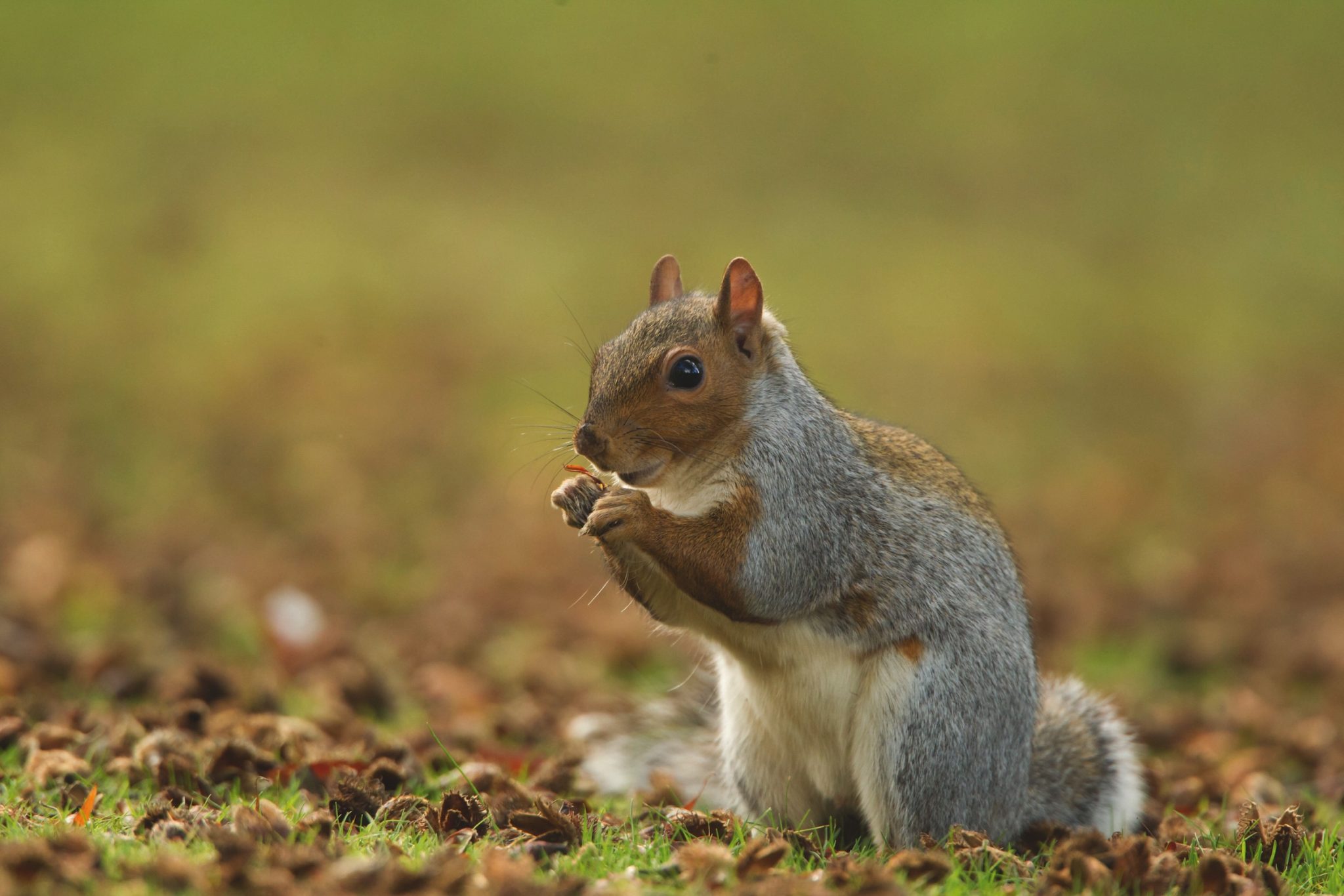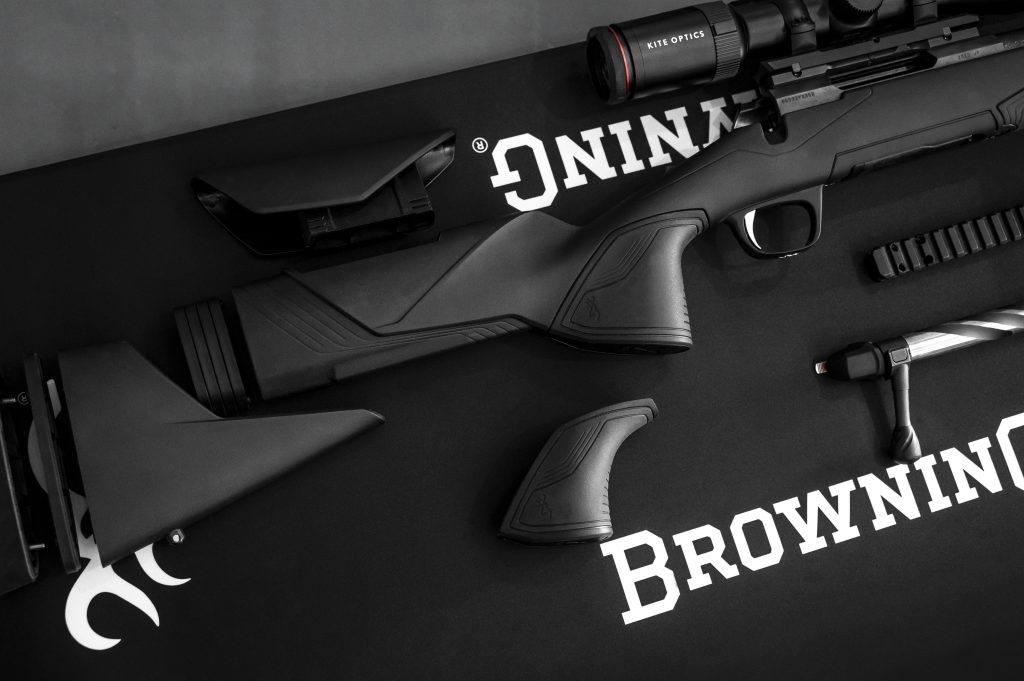Win CENS ProFlex DX5 earplugs worth £1,149 – enter here
Gunsmiths report increase in shotguns ruined by steel shot
Steel shot damage: Gunsmiths are seeing growing numbers of shotguns ruined by steel shot. Sporting Gun's Ian Mason investigates.

Steel shot damage.
This is an article for folk who do a bit of game or rough shooting, and who might get asked to bring along a few non-toxic cartridges since ‘there may be a few duck or geese about’.
Unfortunately, gunsmiths are seeing a steady increase in shotguns ruined by steel shot.
The damage may be subtle – a slight swelling of the barrels at the choke.
Sometimes the gun’s owner is unaware there is a problem until this is pointed out.
Regrettably the net result often is that the gun has been rendered unsafe or out of proof.
Mike Hough, gunsmith at Frederick Beesley, Little Chalfont, Buckinghamshire, showed me some sad examples (see photographs) of steel-wrecked shotguns he’s recently seen.
I assumed these would be older side-by-sides, but Mike pointed to a relatively modern AYA over/under with swollen barrel muzzles.
“The gun’s owner knew that it was proofed for 2.3/4in magnum cartridges so he assumed it would handle steel.
He was wrong – the fixed chokes were too tight and just one cartridge up each barrel was sufficient to cause bulging.”

Mike is an experienced foreshore wildfowler. He also culls inland Canada Geese using his Hatsan Supreme Max Semi Auto stuffed with 3.1/2in 42 gm steel loads.
“I’m very wary about choke. I keep half choke in the Hatsan, and I’ve hidden the other chokes so I don’t use one by mistake,” he said.
“Anyway, you do not need more than half choke with steel shot because steel patterns tighter than lead, so you will not be under-choked.”
EVOLUTION
In the decade since lead shot was banned for wildfowl shooting there has been a steady evolution of steel shot cartridges.

Guns who have shot the odd Standard Steel load (most guns ‘Nitro’ proved to at least 930 bar will comfortably handle Standard Steel loads) may fail to appreciate that the box of cartridges they have just purchased are in fact High Performance Steel.
The latter should only be fired through guns that have passed Steel Shot proof and have been proved to at least 1,320 bar.
The gun will be stamped ‘Steel Shot’ and have a Fleur de Lys proof mark.

“The trouble,” says Mike, “Is that people don’t read the packaging on their cartridges. If you are going to use modern High Performance Steel you really need to check that your gun can handle it.
Regardless of what some people say, I would never use more than half choke with high performance steel.”

Just recently, Eley introduced Eley Lightning their ‘Ultra High Performance’ steel load.
Despite an astonishing 1,640 fps muzzle velocity, Eley maintain that pressures remain within International Proof Commission (CIP) maximum guidelines at 800-850 bar (although BASC have commented that that this cartridge’s speed exceeds current CIP limits)
TRAPS
There are other traps for the unwary. Some older Winchester o/u guns may be stamped ‘Winchester Proof Steel’.
However, this refers to what the barrels are made of, not what can be stuffed up them.
A friend of mine bulged a barrel on his side-by-side whilst pigeon shooting using a ragbag of odds and ends of cartridges accumulated during the game shooting season.
Lurking amongst the standard loads was a High Performance steel load.

Once he had spotted the bulge, a careful inspection of spent cartridge cases revealed the culprit.
So, remember Mike’s ‘rules’ for steel use.
Check for the Fleur de Lys proof mark, no more than half choke, and if in doubt, use bismuth – in fact with a vintage gun, err on the safe side and always use bismuth and even then consider having tight chokes eased open by a gunsmith.

With removable chokes only use those clearly marked as suitable for steel.
Finally, being an alloy of iron plus carbon, steel shot can rust.
People tell horror stories of older steel shot cartridges in which the contents have rusted or even fused into a solid slug!

Modern steel shot is coated to prevent rusting so this should not be a problem, however it still makes sense to store your cartridges in a cool dry place.
If all of the above has not put you off using steel, Stephen Dales of the Steel Shot Company says that around two thousand people in the UK currently home reload steel cartridges.
Spend around £300 on reloading equipment and you could save up to 40%-60% on your cartridge costs, compared with commercially available large-bore loads.
“You can also home-load a cartridge that will maximise your wildfowling gun’s potential,” he said.
Related Articles
Get the latest news delivered direct to your door
Subscribe to Shooting Times & Country
Discover the ultimate companion for field sports enthusiasts with Shooting Times & Country Magazine, the UK’s leading weekly publication that has been at the forefront of shooting culture since 1882. Subscribers gain access to expert tips, comprehensive gear reviews, seasonal advice and a vibrant community of like-minded shooters.
Save on shop price when you subscribe with weekly issues featuring in-depth articles on gundog training, exclusive member offers and access to the digital back issue library. A Shooting Times & Country subscription is more than a magazine, don’t just read about the countryside; immerse yourself in its most authoritative and engaging publication.







